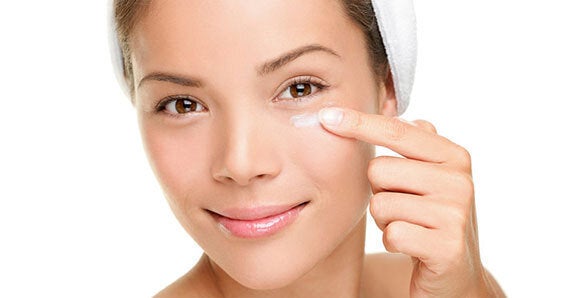
Photo: Thinkstock
Written by Alexis Dobranowski, Communications Advisor at Sunnybrook.
Melanoma is the most dangerous form of skin cancer. It forms when the DNA of your skin is harmed, doesn't repair itself and instead mutates to form cancerous cells. Melanomas often look like moles, or develop from existing moles. It can spread from the skin to other parts of the body.
When caught early, melanoma is a highly treatable form of cancer.
Thank you to Dr. Mary McKenzie, dermatologist, and Dr. Teresa Petrella, medical oncologist, for their tips on prevention and screening for melanoma.
Wear sunscreen.
This ain't news. But we'll remind you: We should all be wearing daily sunscreen of 30 to 60 SPF on exposed skin. Add this to your morning routine. While getting a sunburn doesn't mean you'll automatically develop skin cancer, a history of sunburns does put you at higher risk.
This means you (no matter your skin tone).
While melanoma is more common in those with fair complexions, red hair or freckling skin, other skin tones and types are not exempt. People with dark complexions should also wear sunscreen daily.
Say "absolutely no" to tanning beds.
No good can come of spending time in a tanning bed. Just don't do it. The law in Ontario says teens under 18 aren't allowed. But adults shouldn't use tanning beds either. According to SkinCancer.org, people who first use a tanning bed before age 35 increase their risk for melanoma by 75 per cent. Other studies have found that the risk of melanoma goes up with the hours/sessions/years spent using tanning beds. (More on that here.)
Check yourself and your partner/friend/family members.
You (and sunscreen!) are your best defense against melanoma. Perform self-screening each month. Remember, not all melanoma follow these ABCDEs to a T. So check in with your doctor or dermatologist regularly if you have moles.
Here's what you are looking for, from Melanoma.org. If you have moles or lesions with any of these factors, make an appointment with your family doctor or dermatologist. Look for moles or lesions on the skin that are:
A - Asymmetrical in shape. (This means they aren't an even circle or oval.)
B - Border. Non-cancerous moles tend to have smooth edges. Melanoma lesions often have irregular edges.
C - Colour. A spot that has more than one colour (brown, black, red, tan) or colour that isn't evenly distributed.
D - Diameter. Is the mole wider than six millimeters? (about the size of a pencil eraser)
And most important of all:
E - Evolution. If and how your moles change can be the most important thing to consider when screening yourself for melanoma. If your moles look different in colour, size or shape, call your doctor.
Not just moles.
There are other types of skin cancers that don't look like moles. Wounds that won't heal; hard, pink acne-like lesions on your face that don't go away -- these could be suspicious. Make an appointment with your doctor or dermatologist if you have anything like this on your skin.
Melanoma caught early has an excellent prognosis -- keep an eye on your skin and your family members' and talk to your doctor if you see changes.
Read more about cancer prevention from Sunnybrook experts at health.sunnybrook.ca
Follow HuffPost Canada Blogs on Facebook
MORE ON HUFFPOST:
